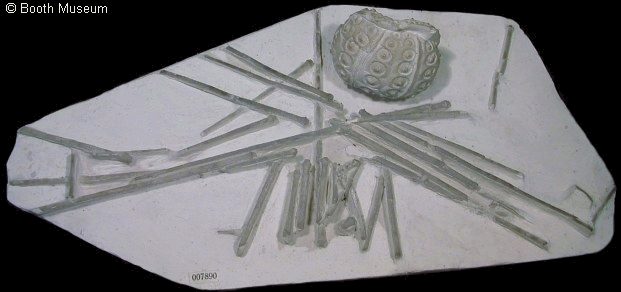
|
Prionocidaris vendocinensis (Agassiz & Desor, 1846) |
A reasonably common and distinctive cidaroid from the Late Turonian (Sternotaxis plana zone) to Santonian of Southern England. The test can be both large and tall, and is readily distinguished from contemporary cidaroids by the large number of primary tubercles / interambulacral plates (up to 18 per interambulacral area). The primary spines are exceptionally long and tapering, with well-developed barbed thorns.
[LINKS]

1). Complete test with associated spines. The test has been inserted into the upright position by the preparator. Assuming that the the spines and test were actually found associated (Victorian fossil dealers often forged specimens from several individuals), it must originally have lain at the centre of the piece with the spines radiating out from it. (x0.7, White Chalk, Houghton, Sussex, from the Willett Collection, Booth Museum, BMB 007890, by kind permission of John Cooper).
|
|
|
2). (A) Lateral (side) view of the test from the above specimen, (x1.5). (B) Complete test with a compliment of primary spines (x0.8, Seaford Chalk,Bromley, Kent, BMNH (British Museum (Natural History) London) 46772. Image © 2007 The Natural History Museum, by kind permission.
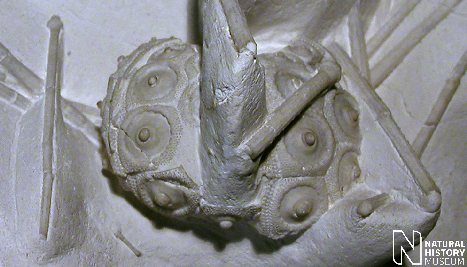
3). Detail of the above specimen (2B); lateral view of the test with associated spines (x2.0). Image © 2007 The Natural History Museum, by kind permission.
 A
A |
 B
B |
4). (A) Typical primary spine; (B) primary spines, a tooth from the lantern lies to the left (both x2, Seaford Head, Seaford Chalk Formation), Randell Collection, RR1813).
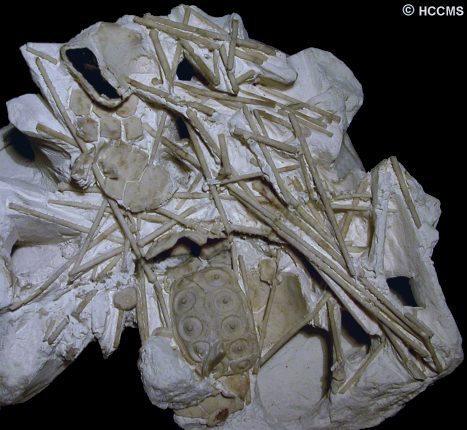
5). The disarticulated and highly jumbled remains of a medium sized individual (x0.7, White Chalk, HCCMS (Hampshire County Council Museum's Service) collection, stored at Gosport Museum, G.1981.173, by kind permission of Dave Kemp, HCCMS).
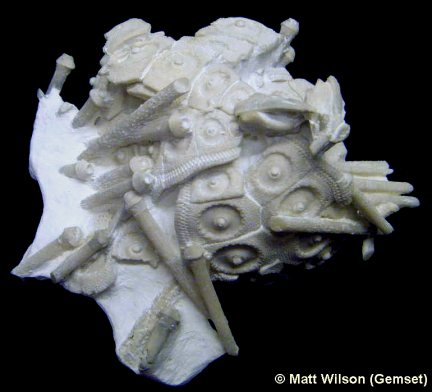
6). Adoral view of a collapsed test retaining a portion of the Aristotle's lantern and a large compliment of primary spines (x1.5, Seaford Chalk, Thanet Coast, Kent, by kind permission of Matt Wilson, Gemset (Broadstairs, Kent).
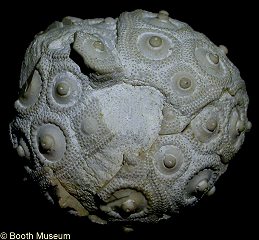 A A |
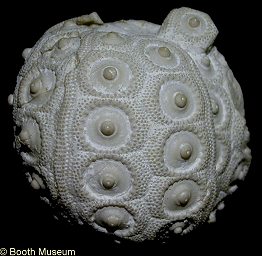 B B |
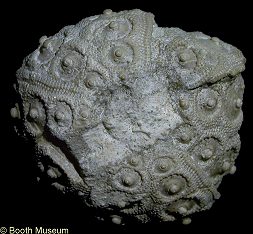 C C |
7). A medium-sized, slightly crushed test; (A) Apical, (B) lateral and (C) oral views (x1.8, White Chalk, Booth Museum, BMB 008316, by kind permission of John Cooper).
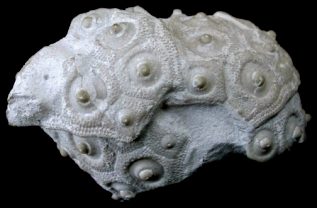 A A |
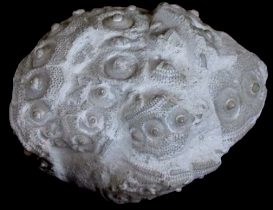 B B |
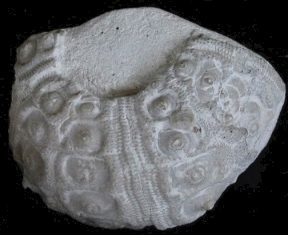 C C |
8). Isolated tests (Hope Gap (L. R. Strevens collection), Coniacian). (A) adapical and (B) adoral views of a large, crushed test (x1.3); (C) Adoral view of a partial test (x1.5).
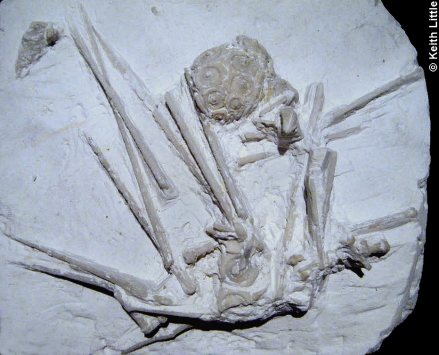
9). Collapsed and scattered test with a compliment of primary spines and lantern elements (x0.8, White Chalk, Thanet coast, Kent, in the collection of Keith Little). Image © 2009 Keith Little, by kind permission.
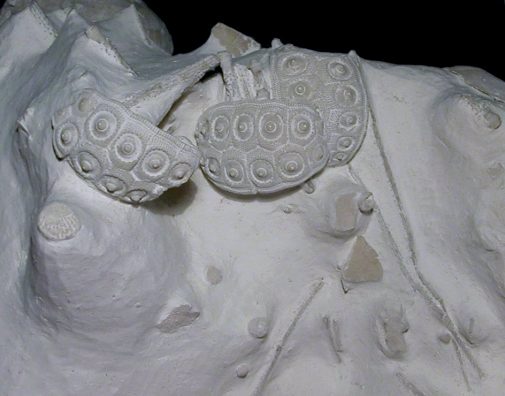 A
A |
|
10). (A) Collapsed test with widely dispersed primary spines. Careful preparation of this block has uncovered an associated fauna of brachiopods, sponges, bryozoans, asteroids, worms and other echinoids (x1.5, Seaford Head, Seaford Chalk Formation, Randell Collection, RR1813). (B) Disarticulated test, spines and other skeletal elements, some test segments have been reversed to expose the unweathered surfaces (x0.8, Hope Gap, Lewes Nodular Chalk, Hope Gap Beds, Randell Collection, RR1567). Some skeletal elements in (B) are encrusted with oysters and worm tubes (see below (Fig. 9C)) implying a prolonged period of exposure on the sea floor after death and prior to burial. Also, the skeletal remains of this specimen are confined to a single bedding surface, implying the substrate was much firmer than that which entombed the individual in (A), whose elements lie at various depths within the rock. Conditions of low sedimentation, leading to prolonged exposure and hardening of the sea floor, are reflected by numerous hardgrounds within the Hope Gap Beds, from which (B) was recovered.
11). (A) Interambulacral segment from a very mature individual, notice the broad region of miliary tubercles relative to the more juvenile individual in (B) (x1.3, Seaford Head, Seaford Chalk Formation). (B-E) Details of the above specimen (8B). (B) Interabulacral segment which retains some of the scrobicular spines (x5); (C) Primary spines encrusted with (I) oysters and (II) worm tubes (x3); (D) Solitary hemi-pyramid from the Aristotle's lantern (x4); (E) Spines and test segment, with (I) a genital plate and (II) a hemi-pyramid associated (x3). All Randell Collection, (A) RR1814, (B-E) RR1567).
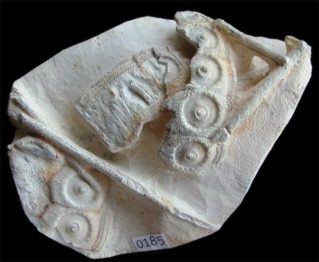 A
A 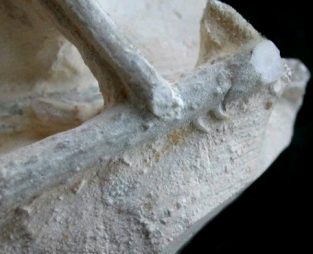 B
B
12). Disarticulated specimen (from an old collection). (A) Test fragments and spines (x1.1). (B) Detail showing the pronounced barbs on the spines (x4.0). Randell Collection, RR0185.
* Another modern Prionocidaris.